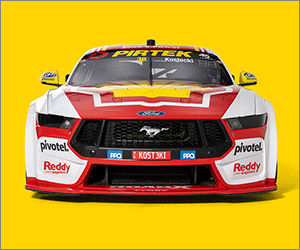
The modern car industry does a pretty good job these days. Unlike the old days when you knew certain brands were reliable, others more dynamic and some just built money-sucking accidents-waiting-to-happen, these days it can be hard to buy a bad car – but not impossible.
Amid the flurry of new Chinese brands entering the Australian market in recent years there has been a lot of hysteria that they are bad cars that we should all avoid. The truth is most new models arriving from China are solid offerings, and to be frank, some are genuinely impressive. Whether it be value or dynamics, there is no question many of these Chinese brands are making a good impression.
Then there’s the subject of our review today – the Leapmotor C10.

For anyone unfamiliar with Leapmotor, which is likely everyone as the company only began operations in 2015 and built its first car in 2019, the brand has been under the Stellantis umbrella since the US-European giant bought a 20 per cent stake in 2023. That’s why it’s now in Australia, as Stellantis helps it grow beyond the Chinese domestic market.
Still, the brand is something of a mystery in Australia and will need to prove itself to local buyers. Certainly having Stellantis, a known company, behind it should be a benefit to Leapmotor’s efforts in what is an increasingly crowded marketplace.
Regardless of the brand’s standing and history, what really matters is the car we’re driving. The C10 is a mid-size SUV with an all-electric powertrain. This puts it in competition with a growing number of rivals, many of which are from similarly new brands, such as the BYD Sealion 7, Deepal S07, Xpeng G6 and Geely EX5 as well as the likes of the Tesla Model Y, Hyundai Ioniq 5, Toyota bZ4X and Subaru Solterra.
That’s a formidable line-up of challengers and, to be blunt, the C10 simply doesn’t feel on the same level.

Which is a shame, because the C10 looks promising from the outside. The design is simple but clean and well-proportioned, which helps it stand out from its rivals that can look a bit ‘same-same’ at times.
However, once you climb inside things start to go downhill. We drove the higher grade C10 Design, which is finished with what the company calls ‘Silicone leather seats’ which is a nice way of saying fake leather – and that’s exactly what it looks and feels like.
But what it lacks in quality it makes up for in quantity, with almost every surface, which is highlighted by its unusual salmon-like colour. The result is an almost monocolour interior, lacking in meaningful highlights to make it really look and feel premium. Instead it looks incredibly generic, like an NPC version of a car.

The twin digital screens are a nice touch, but frankly seemingly every new EV SUV has twin screens so it doesn’t help the C10 make a design statement. However, it doesn’t feature Apple CarPlay or Android Auto – being one of the very few new cars on sale to do so – and the smartphone mirroring tech won’t be available to retrofit in the future.
On the plus side, the cabin is generously sized for a mid-sized SUV.
Then there’s the driving experience and while the electric motor makes a respectable 160kW of power and 320Nm of torque, and sends all of that via the rear wheels. However, this is no sporty EV, with performance best described as modest.
Where the C10 really falls down in my opinion is the way it drives, in particular the steering. The steering is bad and not in a ‘bad for dynamic handling’ way, because this is a mid-size electric SUV so you shouldn’t be buying it for its dynamic prowess. But the steering is so poorly calibrated that it feels like it’s an early iteration of a computer game wheel with the force feedback not set-up right.
It is unevenly weighted and feels dead off-centre, which just makes for an unpleasant everyday driving experience. Honestly, if the steering wheel on my computer felt this bad, I’d unplug it and try reinstalling it.
Having said all this, there is one reason you might seriously consider buying the C10 – it’s cheap. Like, really cheap for an electric mid-size SUV, starting at just $45,888.

Similar money will get you a Toyota RAV4 GLX 2WD Hybrid or a Mazda CX-5 Touring AWD or a Kia Sportage SX Hybrid. Those are all, to be blunt, much better cars but none of them are electric.
If you want a similar-sized EV, the Tesla Model Y begins at $58,900, the BYD Sealion 7 starts at $54,990 and even the Deepal S07 is priced from $53,900. The Geely EX5 starts at just $40,990, but we haven’t driven it yet, so we’ll have to reserve judgement over whether that makes it a bargain or just cheaper.
The net result is, the C10 is certainly one of the most affordable EVs on the market today, but that doesn’t mean it’s worth it. When you pick a car you should be evaluating all of its strengths and weaknesses, and if you do that then the C10 just feels disappointing.
Which is a shame, because at this price point it will be very tempting for not only those looking to buy an electric car, but anyone looking for a modern mid-size SUV. For those who can live with its imperfections, it will be an EV bargain. But hopefully Leapmotor will learn some lessons from this first wave of international expansion and improve not only future iterations of the C10 but also its expanding range.











Discussion about this post